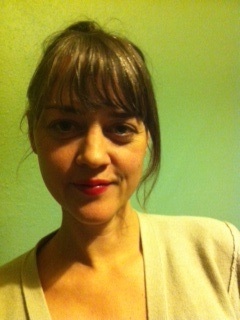Interview with Jennifer Rissler, Cohort ’14
October 31, 2014
Interview with Jennifer Rissler, Cohort ’14
Conducted by Mike Adams, Cohort ’13
September 2014

Would you tell us about your current role at the San Francisco Art Institute?
I’ve been at SFAI for 17 years, because it is such a good fit for me professionally and artistically. It’s a unique school, founded in 1871, and has been a magnet for creative thinkers since it was founded. Boundary pushing, experimentation, and conceptual approaches to problem solving, are at the heart of its ethos. Currently I’m the Associate Dean for Academic Affairs. In this role I oversee the development and assessment of our academic programs and I also serve as the accreditation liaison officer. I’ve held a visiting faculty position for several years, teaching professional practices courses for MFA students as well as a teaching practicum.
What compelled you to study at IDSVA?
I have a profound interest in expanding my overall knowledge of contemporary art, aesthetics, and philosophy. IDSVA’s program is compelling for so many reasons – interrogating the ideas, histories, and motivations of artists to reshape and to advance culture – are at the very core of its curriculum, which interests me tremendously. The low residency structure of the program makes it possible for working artists and administrators to take on doctoral-level study while maintaining a professional and artistic career.
It seems that for some, they consider enrolling in IDSVA’s program, but in the end there’s that one thing that “pushes them over the edge” and they take the plunge. Was that true in your case, and if so, what was that one “thing” that did it?
I’ve always wanted to pursue a PhD but it wasn’t until I was Acting Dean a few years ago that I realized how important it would be to advance my career – the elusive terminal degree in the field is necessary to assume a Dean or Provost role, which is my goal.
Are you surprised by the workload at IDSVA? It’s an intense program!
No, not at all! It is what I expected, and to be honest, what I hoped for. This is a serious endeavor and you have to be willing to push yourself as far as possible.
Many IDSVA students I talk to think that earning their PhD in Philosophy, Aesthetics, and Art Theory will benefit their professional careers, but there also seems to be an element of embarking on the program for purely personal and mostly intangible reasons. Is that true in your case?

Yes, for me there is an altruistic motivation for pursuing this degree. I want to contribute to the visual arts in a meaningful way, to educate future generations of artists, creative thinkers and leaders.
Your first year has thus far immersed you in a survey of 20th spring, but then you jumped into the strange and (hopefully) wonderful world of Kant, Hegel, Marx, and Freud this summer. Was it out of frying pan and into the fire?
This fall I’m revisiting the Art and Theory anthology after reading Kant, Hegel, Marx, and Freud, and the connections I’m making now are quite profound. Again, the iterative nature of IDSVA’s curriculum really works. You can’t help but connect the dots in new and ever-changing ways. It’s very expansive.
You’ve worked to promote women in the arts; what’s your reaction to the lack of women writers in art and philosophy until later in the 20th century?
You’re referencing my work with ArtTable, an organization dedicated to advancing women’s leadership in the visual arts. I’m President Emerita. The organization was founded by a group of women in New York City, who literally found themselves sitting around a table discussing the very problem you reference – why are there so few women leaders in the art world? While I’m not surprised, I will say that this is shifting, partly because of the changing cultural landscape that demands such change, and partly because of the advocacy of ArtTable and other organizations. If you want to change the system, you have to engage and to enact such change. I’ve seen some really positive developments in my years at SFAI as well – women now represent the majority of MFA/MA students (approximately 60%). This is a nationwide trend. That’s a significant shift from a decade ago, and bodes well for the future of women artists and scholars.
Are you drawn to a particular thinker that you may not have been exposed to before, who you’ve now become aware of through your IDSVA studies?
I think what has affected me more than any one thinker in particular is the non-linear nature of the history of consciousness, the history of ideas. Rather than a straightforward, art historical, canonical approach to art theory, IDSVA presents a loop that circles back and forward on itself, forcing you to reflect and to contextualize such histories in an equally non-linear way. Perhaps that’s a very Hegelian view, but the past, present, and future aren’t linear, are they?
What would you say to someone “sitting on the fence” regarding applying to IDSVA?
Jump in, push your limits, you won’t regret it!
